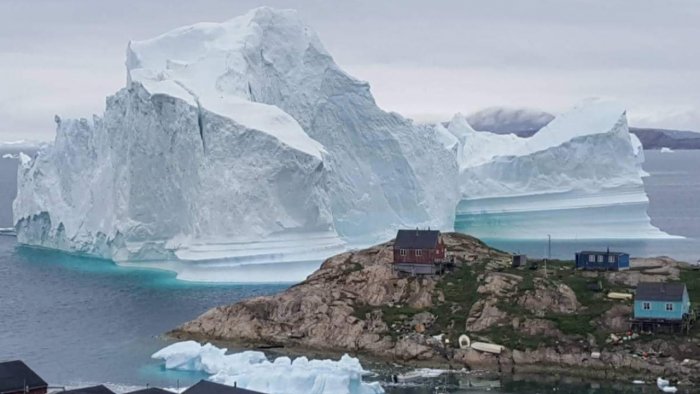About 400,000 years ago, large parts of Greenland were ice-free. Scrubby tundra basked in the Sun’s rays on the island’s northwest highlands.
Evidence suggests that a forest of spruce trees, buzzing with insects, covered the southern part of Greenland.
Global sea level was much higher then, between 20 and 40 feet above today’s levels. Around the world, land that today is home to hundreds of millions of people was under water.
Scientists have known for a while that the Greenland ice sheet had mostly disappeared at some point in the past million years, but not precisely when.
In July 1966, American scientists and US Army engineers completed a six-year effort to drill through the Greenland ice sheet. The drilling took place at Camp Century, one of the military’s most unusual bases – it was nuclear powered and made up of a series of tunnels dug into the Greenland ice sheet.
In 1969, geophysicist Willi Dansgaard’s analysis of the ice core from Camp Century revealed for the first time the details of how Earth’s climate had changed dramatically over the last 125,000 years.
Extended cold glacial periods when the ice expanded quickly gave way to warm interglacial periods when the ice melted and sea level rose, flooding coastal areas around the world. For nearly 30 years, scientists paid little attention to the 12 feet of frozen soil from Camp Century.
One study analysed the pebbles to understand the bedrock beneath the ice sheet. Another suggested intriguingly that the frozen soil preserved evidence of a time warmer than today.
But with no way to date the material, few people paid attention to these studies. By the 1990s, the frozen soil core had vanished. The ancient frozen soil from beneath Greenland’s ice sheet warns of trouble ahead.During the MIS 11 interglacial, Earth was warm and ice sheets were restricted to the high latitudes, a lot like today. Carbon dioxide levels in the atmosphere remained between 265 and 280 parts per million for about 30,000 years.

















